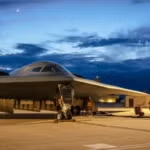
The U.S. Space Force is facing an increased risk of launch problems at its eastern range at Patrick Space Force Base, Fla., and the western range at Vandenberg Space Force Base, Calif., as the service expects to more than double its launches from 49 last year to 157 in 2027, the Pentagon Inspector General said in a newly released audit. The latter examined launches between January 2018 and March last year. "While the Space Force maintained launch range items and…














